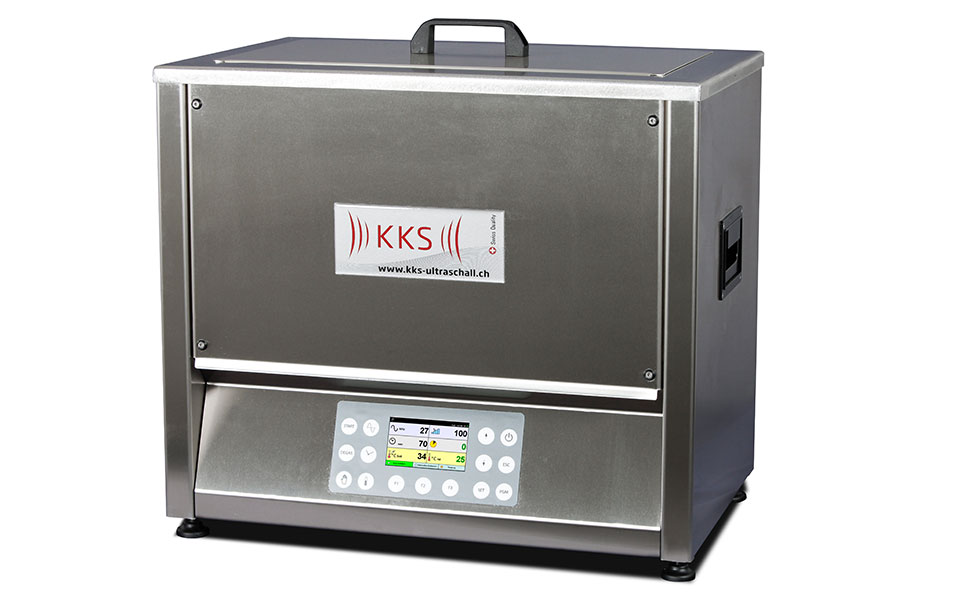Ultrasonic cleaning and rinsing tanks – KKS industrial ultrasonic devices
KKS ultrasonic cleaning and rinsing tanks are robust and reliable industrial ultrasonic devices. They boast a wide range of applications and a high and consistent power output. The devices offer maximum flexibility for every application. They can easily be combined to create a cleaning line specifically adapted to your needs.
Our industrial ultrasonic devices
General instructions for use of industrial ultrasonic devices
Degassing the cleaning media
Large amounts of air (bubbles) are always dissolved in newly prepared and cold cleaning media. A large part of the supplied ultrasonic energy is absorbed (gas cavitation), thereby reducing the cleaning effect. For this reason, the media should be degassed before using ultrasonic cleaning applications. Predefined degassing programs are run for this purpose. The addition of wetting agents or cleaning media further accelerates the degassing process.
- The ultrasonic cleaning tank/rinsing tank is filled with water and, if required the cleaning agent and heated up to operating temperature.
- Degassing of the cleaning or rinsing media is activated via the DEGAS program. Alternatively, the ultrasonic system can be switched on and set to maximum power (preferably pulsed ultrasonic or a higher ultrasonic frequency) in order to degas the liquid. The process takes a few minutes, depending on the ultrasonic power and bath temperature.
Degassing is observable and can be controlled accordingly.
Parts cleaning
The parts to be cleaned are placed directly into the ultrasonic cleaning tank, usually in baskets or with holders for full immersion. A minimum distance of approx. 5 to 10 cm from the ultrasonic membrane surfaces must be maintained. Observe the following rules in particular:
- Do not stack small parts or place them on top of each other
- Large parts must be arranged parallel to the sound direction
- Long, thin and canulated parts should be placed vertically in the media
Cleaning takes from a few seconds to several minutes, depending on the degree of contamination and the chemical dissolving capacity of the cleaning media. If the contamination is dried-on, the treatment may take longer. Here, for example, prior soaking in the bath may be necessary. The cleaning result is significantly improved by moving the parts in the tank, for example by means of an integrated oscillation or by moving the parts manually, as this further helps to rinse off layers that have already been loosened. When parts are removed from an inadequately maintained media, residues of the cleaning media or loosened dirt particles may adhere to the surfaces of parts. Therefore, the parts should always be rinsed well after ultrasonic cleaning.
General cleaning advice
Despite the extensive dispersal of the ultrasound throughout the entire volume of the tank, the accumulation of many small parts and also large parts can cause shadowing. This means that the intensity of the ultrasonic power on the part itself is not sufficient to trigger cavitation on the surface and the parts are not cleaned. Care must therefore be taken to ensure that a suitable distance is always maintained between the parts to be cleaned. Direct contact of the parts or baskets with the ultrasonic membrane surface, especially from the bottom, results in insufficient cleaning performance and damages the ultrasonic transducer.



